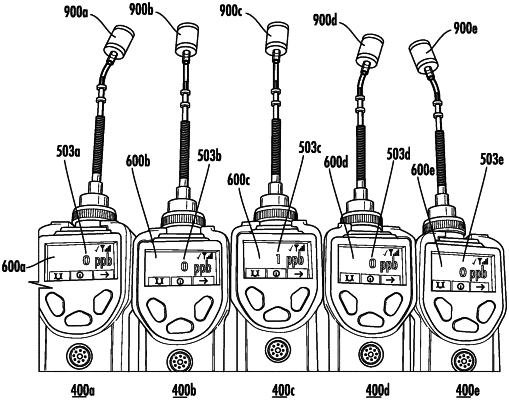| CPC G01N 27/66 (2013.01) | 18 Claims |

|
1. A method for monitoring a target gas by using a gas detector, the method comprising:
determining an absolute zero level when an ultraviolet (UV) lamp of the gas detector is in a second mode and photons are not emitted from the UV lamp, the second mode being a non-operating mode thereof;
determining a deviation when the UV lamp of the gas detector is in a first mode and the target gas is prevented from entering a gas inlet, the first mode of the UV lamp being an operating mode of the UV lamp, so that UV light is emitted therefrom, and the deviation, when a pair of electrically biased electrodes of the gas detector are exposed to the UV lamp in the first mode and are prevented from being exposed to the target gas, being associated with an electrode signal generated by the pair of electrically biased electrodes;
determining a measured output reading when the UV lamp of the gas detector is in the first mode and the target gas enters the gas inlet of the gas detector, the measured output reading, when the pair of electrically biased electrodes of the gas detector are exposed to the UV lamp in the first mode and are exposed to the target gas, being associated with the electrode signal generated by the pair of electrically biased electrodes;
and
computing a calibrated output reading based at least in part on the absolute zero level and the measured output reading.
|